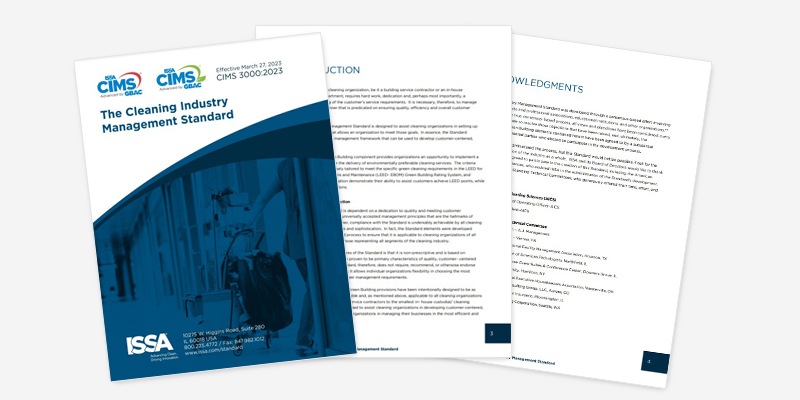Sustainability Committee: Why Your Organization Needs One Now

What Is a Sustainability Committee?
A sustainability committee is a cross-functional team within an organization that leads efforts to improve environmental responsibility, reduce waste, and promote sustainable practices. This committee evaluates current processes, sets eco-friendly goals, and ensures accountability for ongoing sustainability initiatives.
In today’s world, sustainability is no longer a “nice to have”—it’s a business necessity. From rising regulatory pressures to customer demand for green practices, forming a sustainability committee helps organizations stay competitive and responsible.
To explore resources for sustainable leadership in cleaning and facility management, visit the ISSA Sustainability Hub.
Why Your Organization Needs a Sustainability Committee
Creating a sustainability committee empowers your organization to take intentional, measurable steps toward environmental and social responsibility.
Key benefits include:
- Unified vision and leadership: Aligns teams across departments on shared goals.
- Clear accountability: Ensures sustainability is not an afterthought but an integrated part of operations.
- Improved decision-making: Encourages sustainable choices in procurement, operations, and strategy.
- ESG compliance: Helps track and report on environmental, social, and governance commitments.
- Stakeholder engagement: Builds internal and external trust by showing genuine commitment.

Who Should Be on a Sustainability Committee?
A successful sustainability committee brings together diverse voices and perspectives. Consider including representatives from:
- Operations or facilities
- Procurement and supply chain
- Human resources
- Finance and compliance
- Communications or marketing
- Health, safety, and environmental staff
Don’t forget to involve passionate individuals from any level—frontline employees often offer valuable insights and practical solutions.
Roles and Responsibilities
- Assess Current Sustainability Practices
Start by reviewing energy use, waste output, water consumption, chemical use, and procurement patterns. Use audits or benchmarking tools like Energy Star Portfolio Manager to gain insights.
- Set Goals and Metrics
Define clear, realistic objectives. These may include:
- Reducing energy usage by 10% in 12 months
- Diverting 50% of waste from landfills
- Eliminating single-use plastics in breakrooms
- Implementing certified green cleaning protocols
- Educate and Engage Staff
Sustainability isn’t just policy—it’s a culture. The committee should lead educational campaigns and training initiatives that make sustainable habits easy and habitual.
- Monitor and Report Progress
Track KPIs, review performance regularly, and share updates with leadership and staff. This encourages buy-in and continuous improvement.
How to Launch a Sustainability Committee in 5 Steps
- Get Executive Support
Leadership endorsement adds credibility and ensures access to resources.
- Define the Committee’s Mission
Develop a clear statement that outlines goals, scope, and purpose.
- Recruit Members
Invite a cross-section of the organization. Seek diversity in role, background, and experience.
- Hold Regular Meetings
Set a schedule for reviewing progress, addressing challenges, and planning new initiatives.
- Communicate Wins and Lessons Learned
Celebrate successes and share what works. Transparency builds momentum.
Best Practices for Long-Term Success
- Start small: Focus on a few high-impact initiatives before expanding scope.
- Celebrate milestones: Recognizing success keeps the team motivated.
- Stay flexible: Adapt as you learn. Sustainability is a journey, not a destination.
- Integrate into company culture: Embed sustainability into performance reviews, onboarding, and everyday decision-making.
Real-World Examples of Committee-Led Success
Companies across industries have seen results from their committees:
- A university sustainability council implemented building retrofits that saved over $500,000 annually in energy costs.
- A cleaning services firm reduced chemical usage by 40% through green product selection guided by a dedicated green team.
- A healthcare facility’s green team improved indoor air quality by switching to fragrance-free, third-party certified products.
Want to explore more cleaning industry-specific green solutions? Visit the ISSA Sustainability Hub.
Conclusion: Commit to a Greener Future
A sustainability committee can be a game-changer for your organization. With the right people, structure, and strategy, it becomes more than a group—it becomes a catalyst for meaningful environmental and operational change.
Whether you’re just starting or already on the path to greener practices, a well-run sustainability committee ensures that sustainability is woven into the fabric of your organization.
Internal and External Resources
Internal Links:
External Links:















